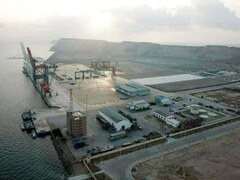 SEOUL: South Korea's oldest nuclear reactor is expected to be shut down permanently in 2017 after growing safety concerns over the ageing facility.
SEOUL: South Korea's oldest nuclear reactor is expected to be shut down permanently in 2017 after growing safety concerns over the ageing facility.
A state energy committee has decided to urge the state-financed Korea Hydro and Nuclear Power Co. (KHNP) to close the Gori Reactor No.1 in the southern port of Busan.
The 580 megawatt reactor would be the first reactor to be closed in South Korea.
"We have decided that it would be desirable for the reactor to be shut down permanently for the sake of middle-and-long term development of the nuclear industry", Energy Minister Yoon Sang-Jick told journalists.
"We will advise KHNP to do so", Yoon, chair of the committee, said after presiding over the committee's policy-making session.
Built with US Westinghouse technology, the reactor started commercial production in 1978.
Its initial life cycle ended in 2007 but the government in 2008 granted it a new lease of life, allowing it to continue operating until 2017.
Environmental activists welcomed the closure of the reactor, which they say has been dogged by troubles of varying degrees.
Korean Federation of Environmental Movement, an umbrella group of pro-environment activists, said 3.4 million people are living within a 30-kilometre (18.75 miles) radius of the reactor.
It urged the government to close another ageing reactor which was allowed to continue running until 2022.
The government in February gave a 10-year extension to the life of Wolsong Reactor No.1 near the southeastern city of Gyeongju.
South Korea currently has 23 nuclear reactors in operation, which meet one third of the country's power needs.
Five more are under construction and four others are being planned, a KHNP spokesman said.





















Comments
Comments are closed.